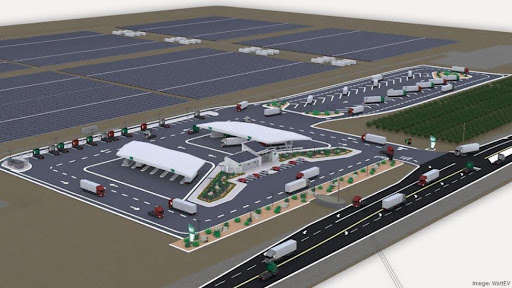In the clean energy transition, the toughest challenges are in moving the transportation sector away from petroleum fuels, and within that the hardest nut to crack is likely to be making heavy duty trucks switch to zero emission vehicles. This has been one of our favorite topics in looking at potential business opportunities for entrepreneurs. See our recent internal discussions and our last blog on charging.
We tackled the topic again in our MeetUp on Nov. 2. We had presentations from Tim Taylor, Vice President and Co-director of the Sacramento Clean Cities Coalition, and Orville Thomas, the incoming CEO of the California Mobility Center. They stimulated a lively discussion. You can view the entire session in our video on YouTube. You can also view the highlight version.
Here were some of the key points:
- Through clever load management and system optimization we can squeeze more out of the existing electrical system to feed EVs, through things like bi-directional charging, managing the load from chargers so that they do not exceed available supplies, and putting battery-buffers on chargers. (We have seen the last approach from companies like FreeWire and ElectricFish).
- But any significant conversion of the transportation to EVs will overwhelm the available supply. On an energy consumption basis, the transportation sector now based on fuels is more than twice the size of the electrical system. At some point, dramatic additions to the electricity supply will be needed.
- The choices seem to be to add to the general supply by adding more carbon-neutral power generation and transmission assets, put generation adjacent to the locations where EV charging demand is the greatest (especially for heavy duty vehicles) in the form of microgrids, or do more with on-board hydrogen zero emissions power generators, with the need to add to hydrogen production and distribution assets.
| CARB Rule % of ZEV vehicles in fleets of 50+ trucks | 10% | 25% | 50% | 75% | 100% |
| Group 1: Box, trucks, vans buses, light duty delivery vehicles | 2025 | 2028 | 2031 | 2033 | 2035+ |
| Group 2: Work trucks, day cab tractors | 2027 | 2030 | 2033 | 2036 | 2039+ |
| Group 3: Sleeper cab tractors | 2030 | 2033 | 2036 | 2039 | 2041+ |
- The recent proposed rule from CARB would create a gradual increase in the conversion of heavy-duty trucks to zero emissions by 2042, but it is still aggressive. A significant concession is that it would apply only to fleets of more than 50 vehicles and only after existing vehicles have reached their lifetime. With so many tractors owned by individuals or in small fleets, the rule would affect a much smaller number of trucks. But the number affected is still huge.
- If the microgrid approach is used for heavy-duty charging stations, the question remains as to what will power it. Given the concentration of demand at such sites, it is unlikely that solar or wind alone will be sufficient. Some form of engine-generator will likely be required and that raises the question of what fuel it will use. The politics seem to be against using any carbon-containing fuel even if it is a renewable fuel that could be shown to be carbon neutral. It would also need to have minimal NOx emissions. There are some big engines that would meet this need but they are expensive. Locating them so the microgrid could be used for other purposes, like powering a nearby industrial facility, may reduce the sting of the cost, but raise issues of conflict with the local utility. There may be ways to get the utilities on-side and make them part of the solution. We also discussed small scale nuclear plants as an option.
- The whole range of challenges may be part of the new mission of the California Mobility Center. Orville Thomas is willing to widen the scope of what the CMC could do, including a broader definition of “mobility” to include more options for disadvantaged communities.
- He is pretty certain that the CMC will be moving on or near the Sac State campus and be administered by the university. His vision includes a new $500 million complex on campus near Ramona Road, including a new building for the College of Engineering and Computer Science. At this point, there is no funding for such a vision, but he thought there were good prospects and a lot of enthusiasm to get it done.
- Both presenters emphasized the need for a larger trained workforce to address all the challenges. Orville mentioned the possibility of an advanced degree program in power for the mobility sector.
This was a very rich discussion, and it highlights a lot of opportunities for innovation and new businesses. We will be carrying on this whole discussion in future MeetUps and on our Perspectives webcasts. Keep an eye out for future announcements from CleanStart.
Does this discussion give you a good business idea you would like to explore? Set up a call with us and we will help you.

Big Charging Station for Electric Trucks Near Sacramento Airport
$34 USDOT million grant, 25 MW, Charge big rig in 20-50 minutes, developed by WattEV

ABOUT THE AUTHOR
Gary Simon is the Chair of CleanStart’s Board. A seasoned energy executive and entrepreneur with 45 years of experience in business, government, and non-profits.
CleanStart Sponsors
Weintraub | Tobin, BlueTech Valley, Revrnt, River City Bank
Moss Adams, PowerSoft.biz, Greenberg Traurig, California Mobility Center


